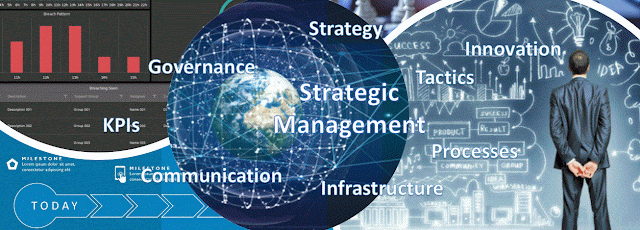Efficiency
Efficiency is the degree to which a solution uses the hardware (storage, network) and other organizational resources to fulfill a given task. Data characterized by high volume, velocity, variety and veracity can be challenging to process, requiring upon case more processing power. Therefore, the DM solutions need to consider these aspects as well. However, efficiency refers on whether the available resources are used efficiently – the waste in terms of resource utilization is minimal.
On the other side the waste of resources can be acceptable when there are other benefits or requirements that need to be considered, respectively when the ratio between resources utilization and effort to built more efficient processes is acceptable.
A DM solution involves iterative and exploratory processes in which knowledge and feedback is integrated in each iteration, therefore it might look like resources are not used efficiently. However, this is a way to handle complexity and uncertainty by breaking the effort in manageable chunks.
Learnability
Learnability is the degree to which a person can become familiar with a solution’s use, the data and the processes associated with it. A DM can be challenging for many technical and non-technical resources as it requires a certain level of skillset and understanding of the requirements, needs and deliverables. The complexity of the data and requirements can be overwhelming, however with appropriate communication and awareness established, the challenges can be overcome.
Stability
Stability is the degree to which a solution is sensitive to environment changes (e.g. overuse of resource, hardware or software failures, updates), respectively on whether it performs with no performance defects or it does not crash under defined levels of stress. Stability can be monitored during the various phases and countermeasures need to be considered in case the solution is not stable enough (e.g. redesigning the solution, breaking the data in smaller chunks)
Suitability
Suitability is the degree to which a solutions provides functions that meet the stated and implied needs. No matter how performant and technologically advanced a solution is, it brings less value as long it doesn’t perform what it was intended to do.
Transparency
Transparency is the degree to which a solution’s stakeholders have access to the requirements, processes, data, documentation, or other information required by them. In a DM transparency is important especially important in respect to the data, logic and rules used in data processing, respectively the number of records processed.
Trustability
Trustability is the degree to which a solution can be trusted to provide the expected results. Even if the technical team assures that the solution can deliver what was indented, the success of a DM is a matter of perception from stakeholders’ perspective. Providing transparency into the data, rules and processes can improve the level of trust however, special attention need to be given to the issues raised by stakeholders during and after Go-Live, as differences need to be mitigated.
Understandability
Understandability is the degree to which the requirements of a solution were understood by the resources involved in terms of what needs to be performed. For the average project resource it might be challenging to understand the implications of a DM, and this can apply to technical as well non-technical resources. Making people aware of the implications is probably one of the most important criteria for success, as the success of a migration is often a matter of perception.
Usability
Usability is the degree to which a solution can be used by the targeted users within the agreed context of usage. Ideally DM solutions need to be easy to use, though there are always trade-offs. In the end, a DM must fit the purpose it was built for.


